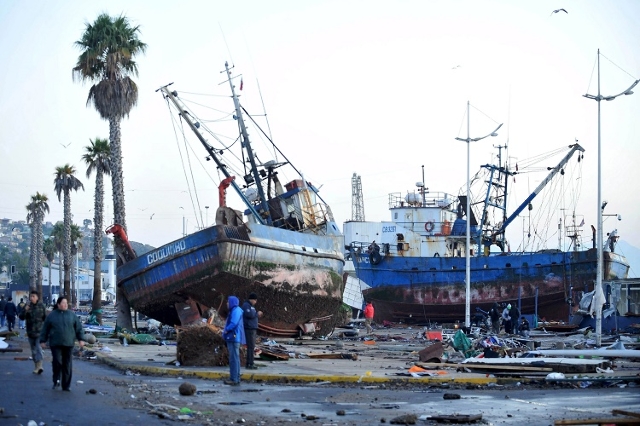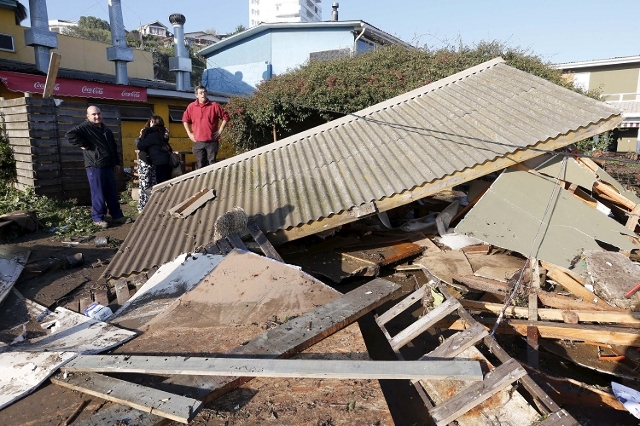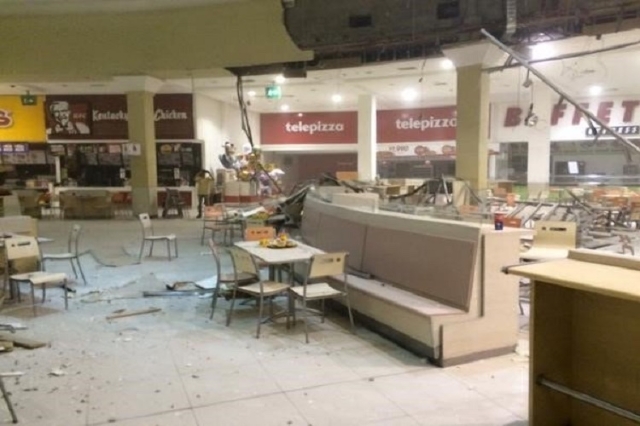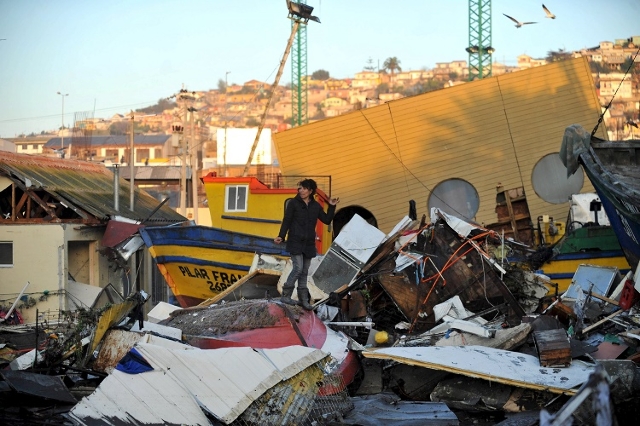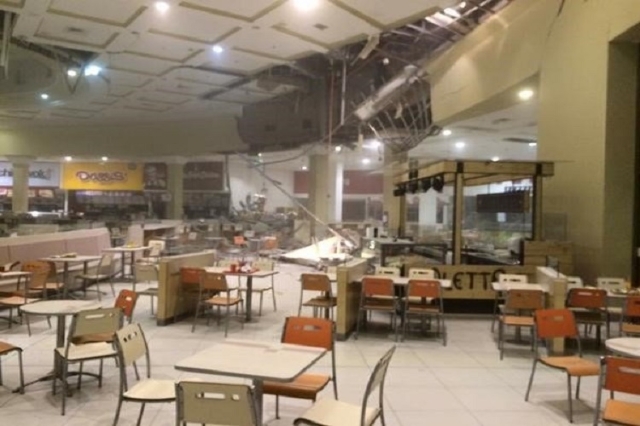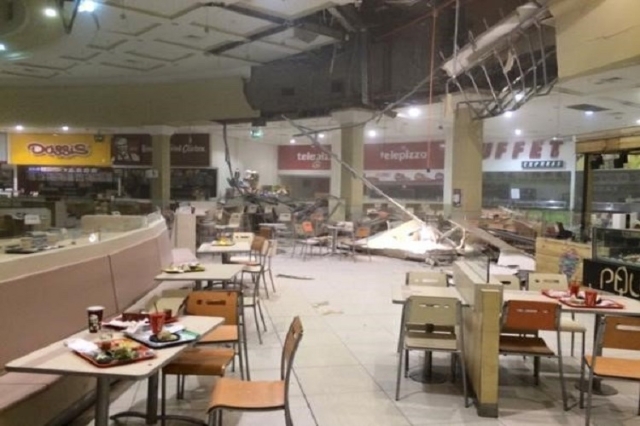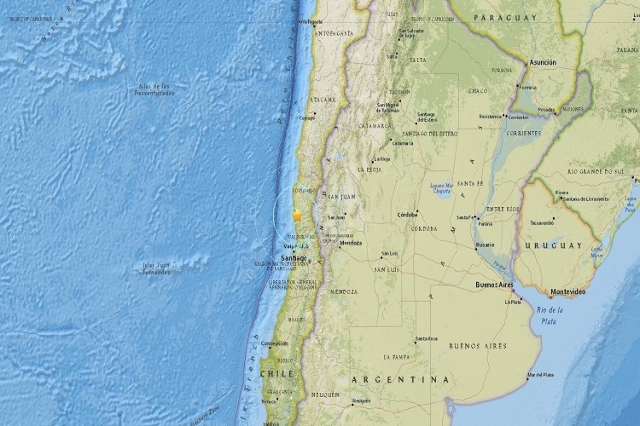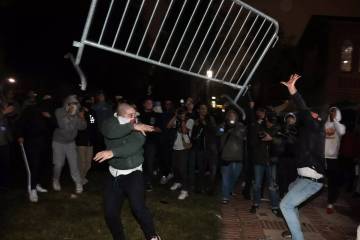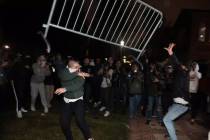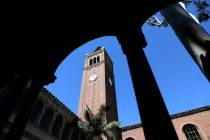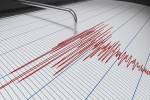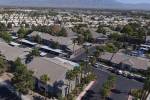California coast under tsunami watch after 8.3 earthquake in Chile
Advanced planning and authorities' quick reaction to a powerful 8.3-magnitude earthquake minimized the severity of the disaster that struck off the coast of Chile, triggering a nearly 16-foot wave on the shore in Coquimbo Region.
About 1 million people evacuated ahead of the tsunami wave. Authorities said at least 10 people died and one person is missing.
The quake hit Wednesday night, with its epicenter 46 kilometers (29 miles) west of Illapel, according to the U.S. Geological Survey.
Some of the fatalities occurred in Illapel, where homes sustained much damage. Undersecretary of the Interior Mahmud Aleuy told CNN Chile that the government sends its condolences to the relatives of the victims.
Before heading to the scene of the earthquake, President Michelle Bachelet told reporters, "The response to this earthquake has been very efficient, and we took the right measures."
Chile's coast is prone to earthquakes, and the country has a long history of large quakes, according to Randy Baldwin, a U.S. Geological Survey geophysicist.
"They've had a lot of experience," Baldwin said, noting a strong monitoring of quake activity and the retrofitting of buildings to minimize harm.
Massive waves
The quake had a depth of 25 kilometers (15.5 miles), the U.S. Geological Survey said.
Chile's national emergency agency issued a tsunami alert, ordering evacuations in coastal areas from Arica to Puerto Aysen.
Large tsunami waves washed along the coast near the quake's epicenter. In Coquimbo, a 15.6-foot wave became the largest to land on Chile's shores, according to the U.S. National Tsunami Warning Center.
Aftershocks continue
More than a dozen aftershocks of magnitude-4.9 or higher rattled residents. Some could be felt in the capital of Santiago, about 230 kilometers (145 miles) away from the quake's epicenter.
"Everybody ran outside. The windows rattled. Things fell. ... The impact was strong," said Emily Hersh, who lives in Santiago. "Even after I stepped outside, I felt the ground moving."
The earthquake hit during rush hour, causing traffic snarls that left many stuck as they tried to get home, said Fabrizio Guzman, emergency communications manager for World Vision in Chile.
"There were many people afraid, running in the streets, when the shaking started," he said in a statement. "The earthquake felt really intense and seemed to last for several minutes."
One aftershock had a magnitude of 7.0. But that's nearly 20 times smaller than the original magnitude-8.3 quake, according to the U.S. Geological Survey's "How Much Bigger" calculator.
More aftershocks are expected, warns Baldwin, the geophysicist. "They could last for weeks, even into months," he said.
Tsunami watch
Tsunami advisories were issued thousands of miles away, including in Hawaii and California.
A tsunami advisory was issued for the coastal areas of Southern California, which means strong currents are likely and residents should stay away from the shore.
Los Angeles, Orange and San Diego counties warned residents to avoid beaches and harbors due to the chances of strong currents.
"Widespread hazardous tsunami waves are possible" along the coasts of Chile and Peru, the Pacific Tsunami Warning Center said, and a tsunami watch is in effect for Hawaii.
A tsunami watch is issued "to alert emergency management officials and the public of an event which may later impact the watch area," the center says. A warning is issued when a "potential tsunami with significant widespread inundation is imminent or expected."
Even New Zealand, 6,000 miles away from the quake's epicenter, issued a tsunami warning.
Strong tidal currents and large waves were expected in some areas, said Shane Bayley of New Zealand's Ministry of Civil Defence.
Power loss
In La Serena, a coastal city north of Coquimbo, pictures taken at a shopping mall showed walls and signs that had toppled to the floor as well as chairs, benches and tables covered in rubble.
Coquimbo Mayor Cristian Galleguillos told CNN Chile that 95% of the city had lost electrical power. Residents evacuated before waves started hitting the coastline, he said.
Chile sits on an arc of volcanoes and fault lines circling the Pacific Ocean known as the "Ring of Fire." The area experiences frequent earthquakes and volcanic eruptions.
Since 1973, Chile has had more than a dozen quakes of magnitude-7.0 and above.



